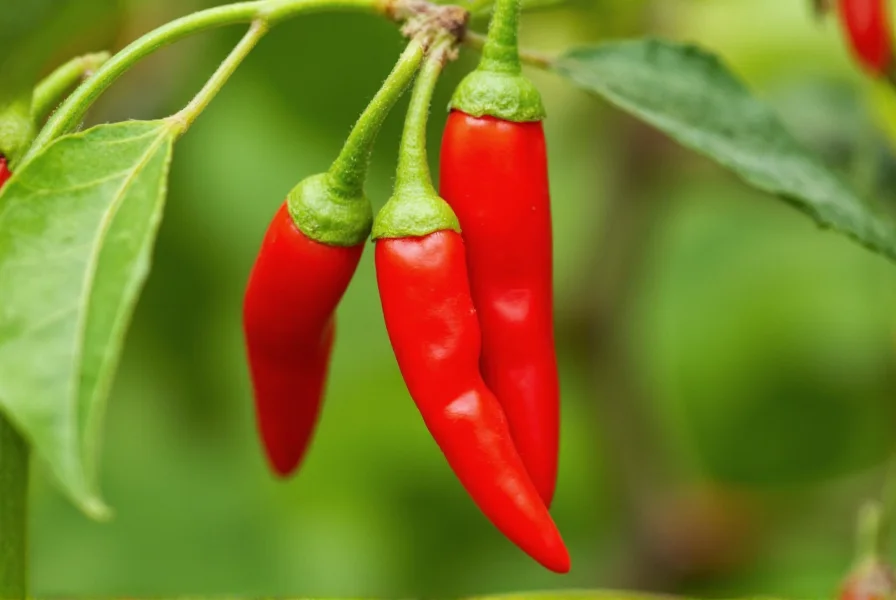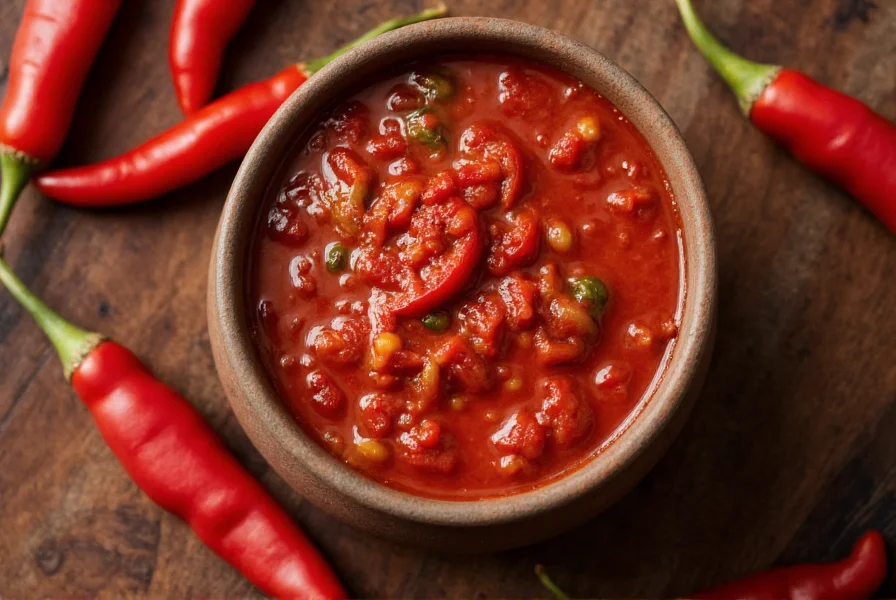For spice enthusiasts and culinary explorers, understanding the cha cha chili's unique properties can transform your cooking experience. This Capsicum annuum cultivar stands among the hotter members of the chili family, though it doesn't reach the extreme levels of ghost peppers or Carolina reapers. Its manageable heat combined with distinctive flavor makes it a favorite among chefs seeking complexity without overwhelming fire.
Understanding Cha Cha Chili Characteristics
Measuring approximately 1-2 inches in length with a tapered shape, the cha cha chili transitions from green to brilliant red as it matures. Unlike some ornamental peppers, this variety serves both decorative and culinary purposes. The thin skin allows for quick cooking and excellent flavor infusion, while the small size means seeds and membranes—which contain most of the capsaicin—comprise a significant portion of the pepper.
| Chili Variety | Scoville Heat Units | Flavor Profile | Common Uses |
|---|---|---|---|
| Cha Cha Chili | 50,000-100,000 SHU | Fruity with citrus notes, intense heat | Stir-fries, salsas, hot sauces |
| Habanero | 100,000-350,000 SHU | Tropical fruit, floral | Caribbean dishes, hot sauces |
| Bird's Eye Chili | 50,000-100,000 SHU | Sharp, grassy heat | Thai curries, Vietnamese dishes |
| Serrano | 10,000-25,000 SHU | Grassy, bright | Pico de gallo, salsas verdes |
Cha Cha Chili in Culinary Applications
When incorporating cha cha chilies into your cooking, remember that less is often more due to their significant heat. Professional chefs recommend removing seeds and membranes to moderate the spiciness while retaining flavor. The cha cha chili's heat develops quickly but doesn't linger as long as some other hot varieties, making it suitable for dishes where you want immediate warmth without prolonged burning sensation.
For authentic Thai cooking, cha cha chilies work well in nam prik (chili dips) and tom yum soup. In Mexican cuisine, they add complexity to mole sauces and salsas. Home cooks experimenting with cha cha chili culinary uses should start with half a pepper for a standard four-person dish, adjusting to taste. The pepper's natural fruitiness pairs exceptionally well with mango, pineapple, and citrus-based recipes—perfect for creating balanced hot sauces that showcase how cha cha chili compares to habanero in fruit-forward applications.

Growing Cha Cha Chili Plants Successfully
Growing cha cha chili plants at home requires warm temperatures (70-85°F), well-draining soil, and approximately 6-8 hours of direct sunlight daily. These peppers typically mature in 70-90 days from transplanting. Gardeners in cooler climates should start seeds indoors 8-10 weeks before the last frost date.
When cultivating cha cha chilies, consistent moisture is crucial—allowing soil to completely dry out between waterings stresses the plants and can increase capsaicin production, making the peppers hotter than typical. For optimal fruit set, hand-pollinate flowers using a small brush during periods of low insect activity. Harvest peppers when they achieve full coloration for maximum flavor development, though they can be picked green for different culinary applications.
Safety Considerations with Hot Peppers
Handling extremely hot peppers like the cha cha chili requires precautions. Always wear gloves when cutting or processing, and avoid touching your face—particularly eyes. If skin contact occurs, wash immediately with soap and cool water; oil-based cleansers work better than water alone for removing capsaicin. Never use hot water, as it opens pores and increases absorption.
When cooking with cha cha chilies, ensure proper ventilation as the volatile capsaicin can become airborne. If you experience burning sensations while eating, dairy products like yogurt or milk provide relief better than water, which merely spreads the oil. Understanding these safety aspects is essential for anyone exploring how to use cha cha chili safely in home cooking.

Where to Source Authentic Cha Cha Chilies
Finding authentic cha cha chilies can be challenging outside specialty markets. Asian grocery stores, particularly those with Southeast Asian focus, often carry them fresh or dried. Latin American markets may stock them under different regional names. For reliable year-round access, growing cha cha chili plants at home proves most consistent.
When purchasing seeds, verify they come from reputable horticultural suppliers to ensure you're getting true cha cha chili rather than mislabeled varieties. Online seed catalogs specializing in heirloom peppers typically provide the most accurate information about heat levels and growing requirements—critical for gardeners researching where to buy authentic cha cha chili seeds.
Conclusion: Embracing the Cha Cha Chili Experience
The cha cha chili represents an exciting intersection of manageable heat and complex flavor that elevates dishes without overwhelming them. Whether you're a home cook experimenting with new ingredients or a gardener seeking to expand your pepper collection, understanding this chili's unique properties unlocks culinary possibilities. By respecting its heat while appreciating its nuanced flavor profile, you can incorporate cha cha chilies into your cooking repertoire with confidence and creativity.
Frequently Asked Questions
How hot is a cha cha chili compared to common peppers?
The cha cha chili measures between 50,000-100,000 Scoville Heat Units (SHU), making it approximately 10-20 times hotter than a jalapeño (2,500-8,000 SHU) and comparable to bird's eye chilies. It's significantly milder than habaneros (100,000-350,000 SHU) and ghost peppers (855,000-1,041,427 SHU), offering intense heat with more manageable spice levels for everyday cooking.
Can I substitute cha cha chili in recipes calling for bird's eye chili?
Yes, cha cha chili can substitute for bird's eye chili as they share similar heat levels (both 50,000-100,000 SHU) and culinary applications. The primary difference lies in flavor profile—cha cha chilies offer more fruitiness while bird's eye chilies have sharper, grassier notes. When substituting, start with equal amounts but be prepared to adjust based on your heat tolerance, as individual pepper heat can vary significantly within the same variety.
What's the best way to preserve harvested cha cha chilies?
Drying remains the most effective preservation method for cha cha chilies. Air-dry them in a warm, well-ventilated space for 1-2 weeks until brittle, then store in airtight containers. Alternatively, freeze whole peppers on a baking sheet before transferring to freezer bags—they'll keep usable texture for 6-12 months. For immediate use, pickle cha cha chilies in vinegar with garlic and spices for refrigerator storage up to 6 months. Never preserve in oil at room temperature due to botulism risk.
Why do my homegrown cha cha chilies vary in heat level?
Chili heat varies due to multiple factors including water stress, soil nutrients, sunlight exposure, and maturity at harvest. Plants experiencing mild drought produce more capsaicin as a defense mechanism. Consistent watering, balanced fertilization, and harvesting at full red maturity create more uniform heat. Genetic variation also plays a role—even within the same plant, individual peppers may differ in spiciness. For consistent heat levels when growing cha cha chili plants, maintain stable growing conditions and harvest at the same maturity stage.











 浙公网安备
33010002000092号
浙公网安备
33010002000092号 浙B2-20120091-4
浙B2-20120091-4